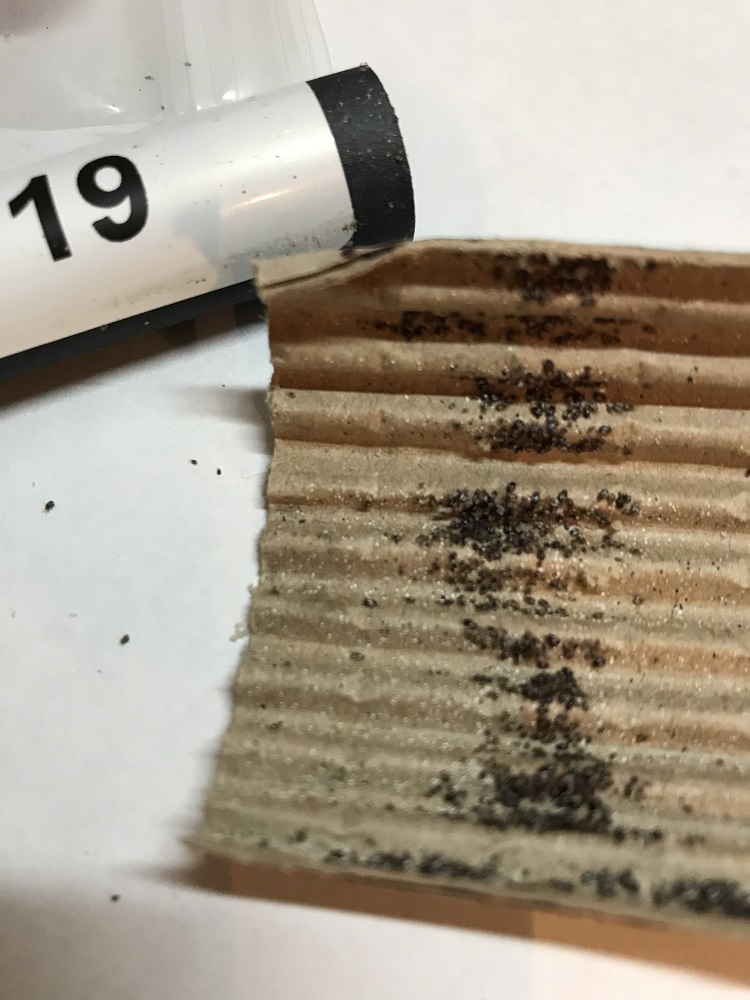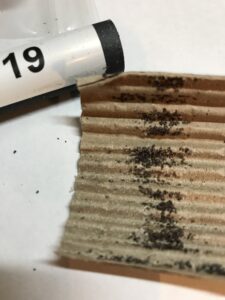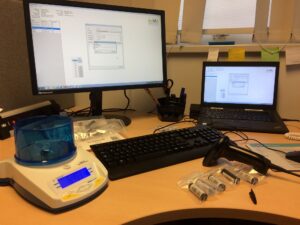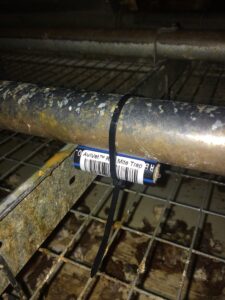During the colder months controlling red mite may not seem like a top priority, but all- year-round monitoring, especially in colony houses, is key to bird productivity.
Red mite infestations can be severely damaging for egg producers, both through a loss of performance and the impact on bird welfare. It is often only once red mite reach high infestation levels in sheds that producers become aware of the problem, by which time, productivity has already been impacted.
However, it has been proven that using a monitoring system throughout the year can help to ensure that red mite levels are kept on top of, controlling the issue before high infestation levels are reached and egg production is affected.
After extensive trials, MSD Animal Health has established a reliable monitoring system for detecting red mite, which traps the pests and uses a weighing scale, a specialised computer program, and unique trap identification to provide quantitative results for farmers and vets to act on. Craig Goddard, poultry key account manager at MSD Animal Health explains the method.
“The traps use a simple design of corrugated cardboard, placed inside a plastic tube, providing an ideal environment for red mite. With a recommendation of using 10 pre-weighed traps per 25,000 birds, these should be evenly placed throughout the shed, on both upper and lower tiers for multi-tier systems with adequate markers for ease of collection.”

“After 48 hours, the traps are collected and placed in individual sealed plastic bags to provide a measurable account of red mite levels in each area. Farmers are then able to assess the levels of red mite in their sheds using the expertise of their vets,” says Goddard.
Once the used traps have been returned to veterinary practices, they are weighed using scales accurate to 0.120mg. This is then compared to their initial weight, with the difference indicating the level of red mite present.
A significant benefit of these monitoring traps is their ability to warn farmers of potential infestation levels, before this is reached. As a guide, traps which weigh less than 250mg indicate a low red mite level, and weights of 250-500mg suggest a moderate level. Any traps weighing above 500mg, the equivalent of around 3,000 red mites, indicate an infestation and the need for treatment.
The monitoring traps should be used all-year-round, especially in colony sheds where outdoor temperature has little impact inside the shed.
“In the past, farmers have been able to carry out their own monitoring by making traps themselves and counting the number of red mites found in each, however, this can be extremely time consuming. Working with veterinary practices ensures quick and accurate results that can be easily interpreted.
“We have seen the positive impact this monitoring system has had on farms, allowing farmers to take back control on something which has previously been incredibly difficult to manage.
“Peer reviewed research has further confirmed our confidence in the traps, as it demonstrated the weight of red mite in the monitoring traps captured 99.6 percent of all four life cycle stages of red mite,” adds Goddard.
Specialists recommend using a set of traps monthly as through regular monitoring, vets can compare population dynamics, and identify red mite ‘hot spots’ within the sheds, which means they can focus on these areas when carrying out their regular checks.
Positioning for success
Farmers are often unaware that where red mite monitoring traps are positioned in sheds can greatly determine their effectiveness.
“The ideal environment for red mite is a protected space, for example near steel joints, where they will be out of pecking reach from birds. Normally they search for this environment after feeding when they travel along the perches. Traps should be placed along this pathway making sure they are not too far away from nesting birds so that they capture the majority of the red mite,” suggests Goddard.
There is a common misconception that traps should be placed near existing clusters of red mites with the belief that this will encourage the cluster to move into the trap. However, in this instance, red mites will see the cluster as a breeding opportunity and will not enter the trap.
On a multi-tier system, a monitoring trap should be placed at both ends of the perches on the lower tiers, and the remaining traps should be placed where the mesh division grids separate bird sections on both the lower and upper tiers. Using cable ties, the traps can be secured under the perch so that they are not damaged by birds.
Veterinary advice
Helen Errington, a vet at St. David’s Poultry Team, gives her advice on monitoring red mite after years of practical experience in tackling the disease.
“As an industry, we need to be intervening sooner when it comes to red mite due to the detrimental impact it has on both productivity and bird welfare.
“Quite often, farmers see red mite monitoring as a hassle and cost, and it can be difficult to get across the impact small rises in the red mite population have on productivity, until they are forced to treat for the disease and see that production increases – so there is usually a cost-benefit to monitoring.
“Producing eggs is not a priority for birds, first and foremost hens will keep themselves healthy. If they are under any stress, one of the tools they have available to them is to shut down their egg laying ability leading to a fall in egg production on the site,” says Errington.
“Red mite has a huge impact on birds, causing an array of issues including irritation, anaemia and feather loss. The birds are also concentrating their energy on making replacement red blood cells rather than producing eggs. Red mites feed on blood from the hen which means they can be vectors for other diseases such as mycoplasma infections.
“If red mite reach high infestation levels, eggshell quality can be impacted and in very high levels of infestation staining of the shells. Mites can be carried on people and equipment and you may also be putting other producers in your producer group at risk through things like shared packaging and equipment, potentially introducing infection onto other sites.
“Using traps throughout the year is extremely important because it enables you to quantify your red mite levels, otherwise you will be unaware of what is happening in your sheds. Traps should also be looked at regularly to make sure you are always aware of your red mite status.
“Populations can expand extremely quickly and by the time you actually notice red mite, for example they are visible on eggs, the numbers are massive and are already causing significant issues to your profitability.
“Red mite monitoring can also help you to identify areas of the shed where red mites tend to cluster.
“In the first instance, you should speak to your vet to see what monitoring system they would recommend as they will be most familiar with your business.”






